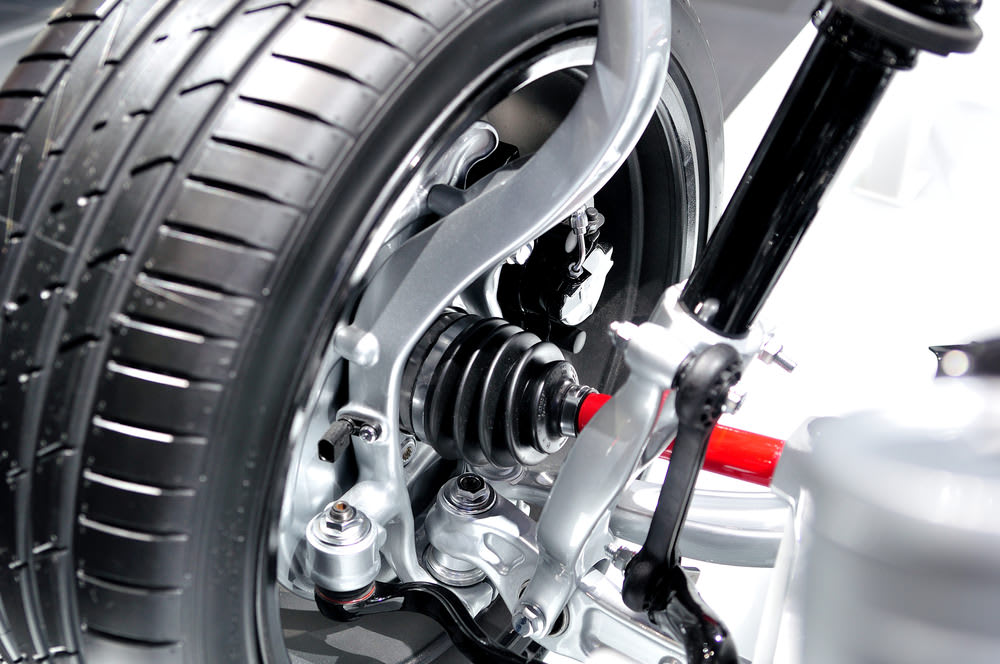A lot of us have heard the word ‘automobile suspension system’ many times when having issues with our car. There is a possibility that we find it a bit more foreign to the usual things we are familiar with at the auto mechanic shop. Just like other components that make up a car, the suspension plays its role effectively in making your car driveable as well as safe for you on the road. We have taken our time to pick out some frequently asked questions on automobile suspension system.
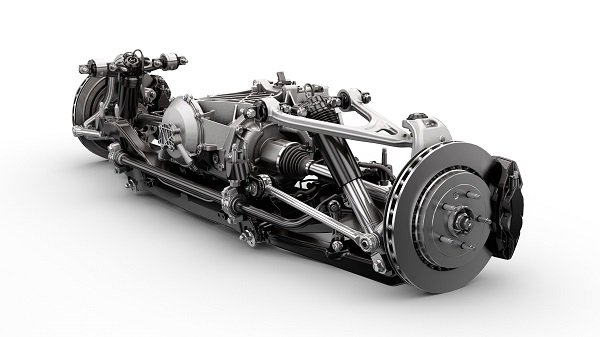
1. What is an automobile suspension system?
The automobile suspension system simply refers to the system comprising tire air, tire, linkages, shock absorber, strut and springs. This system creates a connection between your car and the wheels, permitting relative motion between them. The quality of the ride as well as its handling on the road is made possible by the suspension system. Interestingly, these two are usually are at odds with each other. Importantly, the suspension system plays the role of keeping the wheels in contact with the surface of the road. The suspension system in a car also acts as protective force against wears or damages.

Simply speaking, the suspension system optimizes friction between the road surface and the tires. By doing so, it will ensure stability and passengers’ comfort. Apparently, we know every road can’t be flat. The suspension system comes into play by keeping the car in shape when driving over tough terrains. Tires on the car get its traction from suspension so as not to swerve from the path. The occupants and the cargo will be in safe hand when driving over unexpected road obstacles such as potholes or debris.
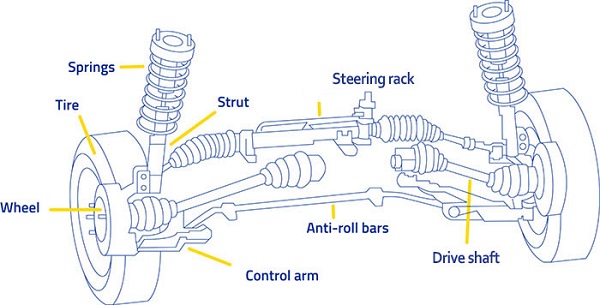
The wheels and tires on the car usually get the generative energy whenever it hits on a bumpy object while moving. The tires and wheels might be able to handle energy generated during a minor bump. However, during severe case, the inner frame of the vehicle takes the hit from the energy generated. When this happens, the suspension system comes to rescue, by protecting the inner frame while absorbing the massive energy generated from the road obstacles. When you feel uncomfortable moving on a bumpy road either as a driver or passenger, just know that something is not right somewhere. The inner frame beneath where you sit is really taking some lashes from the rough road surface.
2. How does suspension system work?
The chassis on a vehicle comprises suspension system, steering system, wheels and tires. The suspension system therefore contains parts such as springs, anti-roll bar and dampers. Unarguably, the springs play the most important role in the mechanics of an automobile suspension system. The springs are responsible for upholding the total weight of the car, which also includes driver and passengers’ weight. The springs also assist in properly keeping the frame above the surface for smooth and comfortable ride.
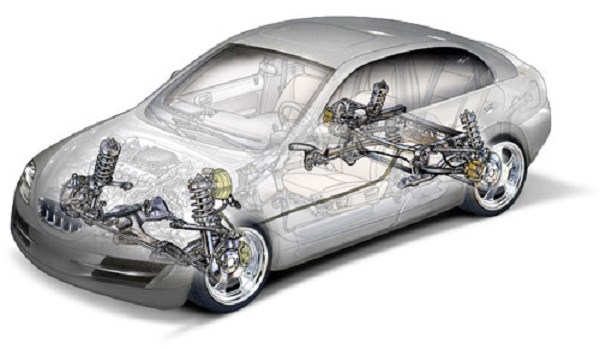
Steel materials are often used in making heavy duty coil spring in some vehicles, which helps in absorbing the energy impact generated by the vehicle on bumpy roads or rough terrains. There are other types of springs fitted on vehicle. These include leaf spring, air spring and hydraulic spring. All these springs play same role but are designed for different types of vehicle.
At a very quick rate, every spring extends out and compresses as well. The dampener comes into play by managing this motion within the suspension system. For most vehicles, the struts act as vital components of this dampener.
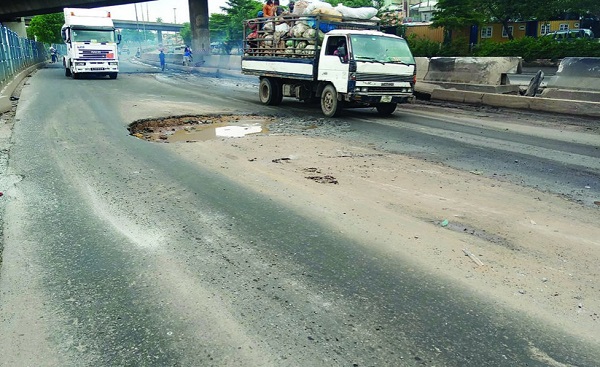
The shock absorber plays a very crucial role in the automobile suspension system. It absorbs or takes the shocks that could have otherwise made your ride hell on the road. You may liken it to the ‘batman’ of the suspension world.
The sway bars also known as anti-roll bars are responsible for mechanically reducing body rolls by linking the two sides of the vehicle together, using the torsion spring. The extent at which the body is permitted to roll depends on the width of the bar. This also applies to the way a vehicle handles every cornered road. We recognize the absence of these sway bars in some vehicles, but expensive vehicles usually come with sway bars (electrically-controlled).

3. What are the types of suspension system?
There are two popular types of automobile suspension system, which are rigid axle and independent suspension system.
- Rigid axle
Sometimes referred to as live axle or solid axle, the rigid axle suspension system connects opposing wheels using solid beam. It was the first commercially produced type. The wheel on one side is usually affected when wheel on the opposite side gets in contact with bump or debris. Consequently, it becomes a big setback by lowering the quality of driving. The good thing about the rigid axle is that its production cost is very low. It gives a lot of wheel travel while supporting off-road adventure. The rigid axle can be very useful when carrying heavy weight, making it an ideal suspension system for heavy-duty trucks.
- Independent suspension
Nowadays, this independent suspension is commonly used on vehicles. From its name, it makes it possible for every wheel to move independently of other wheels, on any kind of road surface. It takes away the road impact from every other wheel. Although, it’s a bit complex, but offers better ride quality than the rigid axle. Its complexity makes production cost high while reducing the wheel travel. At the same time, the independent suspension doesn’t encourage heavy load. The two popularly known independent suspensions in the market today are the double wishbone suspension and MacPherson struts. The independent suspension is mostly fitted on sports car or sedan models.
>>> See the 07 steps you should know when waxing your car
4. What are the symptoms of a bad or failing suspension system?
Your life and that of other occupants are at risk when you drive around in a car with bad suspension system. To avoid such calamity or road frustration, there are certain signs of bad or failing suspension system you should look out for when driving across town. These include:
- When your vehicle pulls to the left or ride side when driving. This often tells on the alignment of your vehicle on the road. It could happen due to reasons such as uneven tire pressure, bad steering rack, sticking brake caliper and poor alignment. Sometimes, the change in alignment of your vehicle could be caused by broken control arm or spring.
- When you feel discomfort when riding over road bumps, you should call your auto mechanic to take a look at the struts or shocks. When these components are worn out, they make your vehicle to bounce while on the road. There is a possibility that your car shock absorber is worn out as well. The fluid from the shocks could also be leaking, which originally are supposed to dampen the way your car bounces on the road.
- Another sign you should look out for is when you notice your car is sitting low at one corner. This is easily noticeable on flat surface. The most likely culprit here is the spring, which might have been damaged. Since one side of your car is siting lower than other side, you might be hearing clunking noise when riding over bumps. The impaired spring obviously cannot support the weight again. When the shock is blown too, it makes it difficult for the vehicle to react greatly when moving on rough terrain.
- One of the symptoms of bad suspension system is when the vehicle rolls, leans back or nose dives. This could be attributed to worn out struts or shocks. This usually happens when you handle your car extremely on the road. To avoid this, you should refrain from leaning forward in a routine stop at suburban intersection.
- The last and not the least sign of bad suspension system is difficulty in steering. When you find it hard to steer your car at low speed, something is definitely wrong with the suspension system. The steering system in your car may be suffering from issues such as worn power steering belt, faulty power steering rack, low power steering fluid or worn control arm bushings.
5. Conclusion
As we keep moving with present age to the golden era, we should expect lots of automotive innovations on the suspension system fitted on manufactured vehicles. For modern day auto products, built-in sensors and computers are now used as aids for the newly introduced suspension system. This is why driving experience in new cars are way better than those produced in the past.
>>> For more informative auto news and car tips like this, click here!
